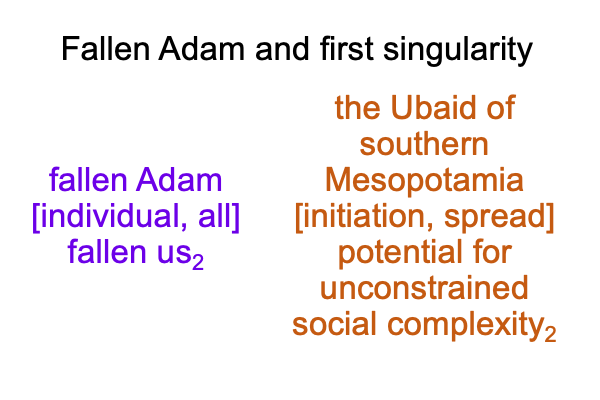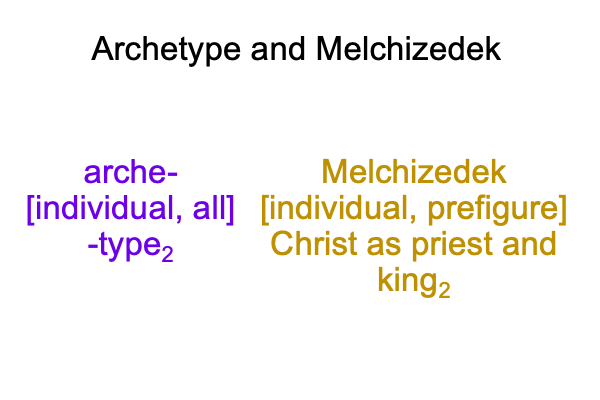0101 What is proposition 11?
Adam and Eve are both archetypal and real people who lived in the past.
This proposition follows from both the archetype as hylomorphe and the fall as a condition. If Adam is the original fallen one, and if we are the imprint of Adam’s fallenness, then we wonder, “How could this have happened?”
The contiguity, [individual, all], does not seem adequate.
So, how does the hylomorphe work?
0102 Paul does not completely escape this issue, since he raises the question of conditions between Adam and Moses in Romans 5. He seems to answer that the hylomorphe works because Adam broke God’s explicit commandment and this infraction establishes that God has explicit commandments, whether we are aware of them or not. Thinkers in the Second Temple Period wrestle with these questions, I suppose, because the Jewish establishment is heavily invested in elucidating and proclaiming commandments found in the Pentateuch and proposing (or offering) ways around them (if you get my drift). If there are 600 commandments to be found, then certainly their (often illiterate) clients do not know them.
0103 Three hundred years later, Saint Augustine comes up with a far better way to explain the contiguity between fallen Adam and fallen us. We are directly descended from Adam and Eve. Unlike Paul’s solution, Augustine’s explanation turns out to be fully scientific, because it is fully debunked by the discipline of genetics seventeen centuries later.
Walton says that genetics debunking Augustine’s proposal is irrelevant, since Adam and Eve are archetypes. However, as noted above, Adam may be archetypal without raising scientific questions, but when fallen Adam is archetypal, scientific questions cannot be avoided.
0104 Happily, another solution comes from (what I jokingly call) Augustine’s corrected proposal, which provides a parallel hylomorphe in the field of science.

0105 To me, Augustine’s corrected proposal is to be preferred to Walton’s waving the word, “archetype”, all over the place.
0106 In order to shore up his argument ,Walton presents an example of another biblical figure who is archetypal and a real person in history.
Paul discusses Mechizedek in Hebrew 5-7. He mixes information about Melchizedek in Genesis 14, rhetoric about Melchizedek as a theological-political prototype of Jerusalem-based rulership, and speculative Jewish theology. He presents Melchizedek as an archetype for Christ as priest and king.
Here is a picture.

0107 Yes, Walton’s argument about Melchizedek and archetype works.
So, this where Walton takes his readers.
